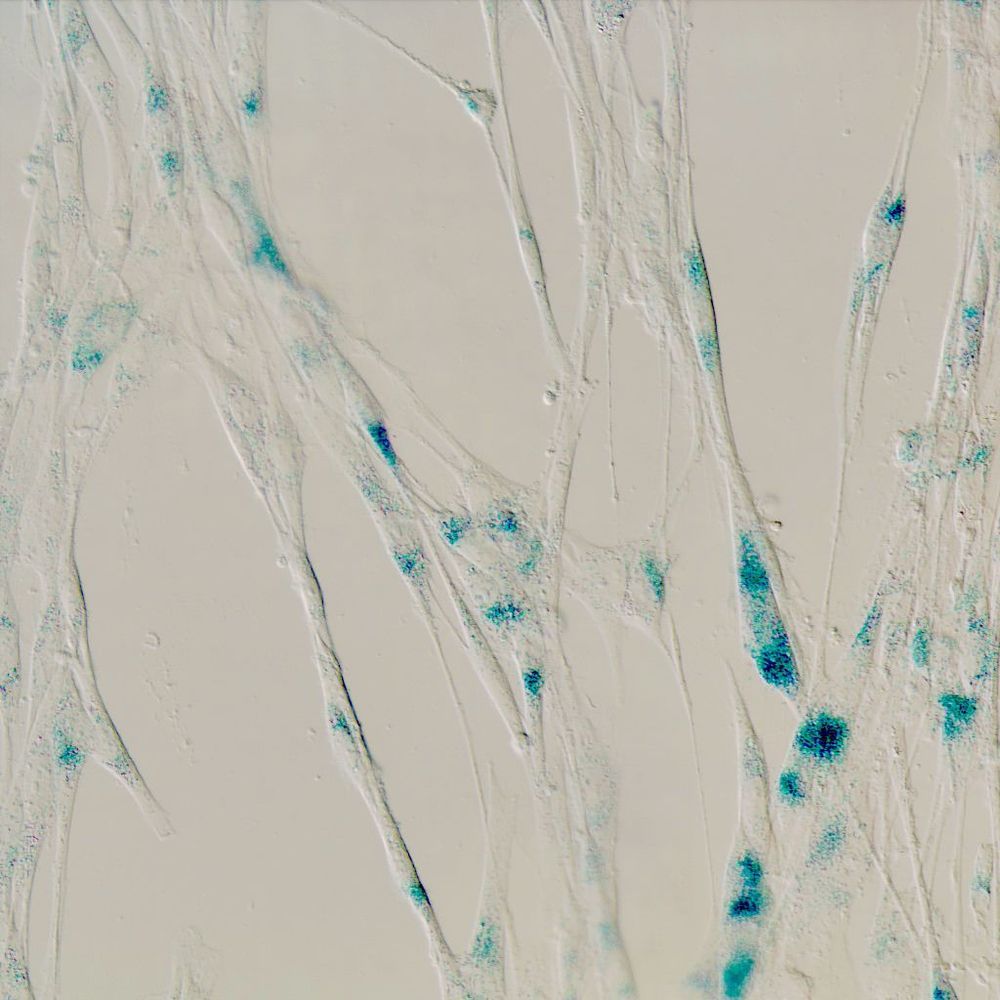A new study shows that the effects of aging appear in the brain can appear in your 40s. Cutting carbohydrates may protect you, though.


This episode #20 of my “Pessimistic guide to Anti-Aging Research” titled “Healthspan First, Lifespan –Distant Second”.
When we are dreaming of physical immortality, we really mean not one but two very different immortalities: the one for our body, and quite another for our spirit. The body permits essentially any kind of interventions, modifications, replacements or even transformations for the sake of staying healthy and young indefinitely. In contrast, the spirit absolutely demands the preservation of our unique personalities and memories and, therefore, does not make allowances for treatments that violate this condition.

Circa 2018 we need crispr pills for this.
The steady march of aging might not have to be so steady, according to a growing body of research. Now a team from the University at Buffalo has isolated a single gene that controls senescence, the process that stops cells from dividing and contributes to aging symptoms. Ramping it up, they found how easily the effect can spread among neighboring cells. That makes the gene a crucial target for future work into anti-aging and cancer therapies.
Living cells have a natural limit to the amount of times they can divide, before they stop and become what are known as senescent cells. The problem is, over time these senescent cells build up in the body, eventually contributing to the physical symptoms we associate with aging, such as increased risk of diabetes, heart disease, arthritis and cataracts. On the other hand though, completely halting senescence can lead to cancer, as the cells continue to divide unchecked.
Realizing this mechanism, scientists have been developing ways to clear out these senescent cells, including a new class of drugs known as senolytics. In tests, these drugs have been found to extend the lifespan of mice by up to an impressive 35 percent, and keep them in better health for longer.

Researchers from AgeX Therapeutics and other organizations have proved the feasibility of reprogramming banked cells derived from a supercentenarian. Their discovery portends exciting new possibilities for aging research.
What is cellular reprogramming?
Cellular reprogramming is the process of reverting mature, specialized cells into induced pluripotent stem cells (iPSCs), which can develop into any cell type found in the human body. Cellular reprogramming technology was pioneered in 2006 by Drs. Takahashi and Yamanaka, who achieved this impressive result by overexpressing just four genes, Oct4, Sox2, Klf4, and c-Myc (OSKM), which became collectively known as the Yamanaka factors. For this breakthrough, Yamanaka was awarded the Nobel Prize in 2012. Fun fact: Yamanaka called these cells iPSCs – with a small “i” – as a nod to the iPod and similarly named devices.



3 minutes for glaucoma eye surgery.
Cataract and glaucoma are eye diseases that progress by aging. Both are severe diseases that can cause blindness, but in Japan, unique treatment methods and causes are being investigated. For cataracts, the world is paying attention to a Japanese doctor who has devised an innovative surgical method which is in just over 3 minutes. And distinctive research is progressing at Japanese universities as to what kind of ingredients can delay the progression of glaucoma. How can we save people from blindness? Explore with us the forefront of Japanese ophthalmic medical care.
Journalist Chip Walter visited our friends at Willoughby-Eastlake Public Library earlier this month to discuss his new book, “Immortality, Inc.” Walter discusses the resources (both the brilliant people and astonishing amount of money) being dedicated to seeing if people do, in fact, have to die.
The UK Cryonics and Cryopreservation Research Network is a group of UK researchers who, together with international advisors, aim to advance research in cryopreservation and its applications.
Although we are a small group, we hope to promote academic and industrial activity on cryopreservation, and discuss its potential applications, including the idea of cryopreserving whole humans, commonly known as cryonics. We acknowledge that cryonics is a controversial topic, but like any unprovable approach we think its scientific discussion is necessary to permit its understanding by the public and by the wider scientific community, and it allows us to address many of the misunderstandings surrounding cryonics. We also think that cryopreservation, cryogenics and cryonics are fields with a huge potential impact on human medicine whose societal implications should be considered and debated.
We hope to attract and excite students and other researchers about cryobiology, contribute to knowledge exchange and help attract interest and funding to the field.

In the past few decades, researchers discovered that the rate at which we age is strongly influenced by biochemical processes that, at least in animal models, can be controlled in the laboratory. Telomere shortening is one of these processes; another is the ability of cells to detect nutrients mediated by the mTOR protein. Researchers have been able to prolong life in many species by modifying either one of them. But what if they manipulate both?
A team from the Spanish National Cancer Research Centre (CNIO) has studied it for the first time, with unexpected results. Blocking nutrient sensing by treatment with rapamycin, an mTOR inhibitor, delays the aging of healthy mice, but curiously, it worsens diseases and premature aging that occur in mice with short telomeres. This finding has important implications for the treatment of diseases associated with short telomeres, but also for age-related diseases that are also associated with short telomeres. The study, done by the Telomeres and Telomerase Group headed by Maria Blasco at the CNIO, is published in Nature Communications with Iole Ferrara-Romeo as the first author.
Telomeres, regions of repetitive nucleotide sequences at the end of chromosomes, preserve the genetic information of the cells. They shorten with age until they can no longer fulfill their function: The cells stop dividing and the tissues age since they are no longer able to regenerate.